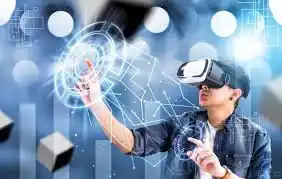Transformative Role of Virtual Reality in Business

Virtual reality (VR) has emerged as a game-changing tool that is reshaping the way businesses operate and connect with their customers.
The immersive and interactive nature of VR has opened up new horizons for various industries, allowing them to enhance their processes, engage customers in innovative ways, and unlock unprecedented opportunities.
In this article, we will explore the remarkable role of virtual reality in business and delve into how it is revolutionizing the way companies operate.
How to Enhancing Customer Engagement
Virtual reality has revolutionized the way businesses engage with their customers.
Through VR experiences, companies can create immersive demonstrations of their products and services, giving customers the opportunity to interact with them as if they were physically present.
This level of engagement goes beyond traditional marketing methods, allowing customers to make informed decisions and form more authentic connections with brands.
Streamlining Employee Training
One of the most remarkable applications of VR in business is its impact on employee training.
VR simulations provide a safe and controlled environment for training scenarios, such as emergency response drills or complex machinery operation.
This not only reduces training costs but also enhances the learning experience by allowing employees to practice real-life situations without the associated risks.
Architectural Visualization and Design
For industries such as architecture and real estate, VR has become an invaluable tool for visualizing designs and spaces.
Architects can create virtual walkthroughs of buildings before construction even begins, enabling clients to experience the final product in a realistic manner.
This not only streamlines the design process but also helps clients make well-informed decisions based on a deeper understanding of the project.
Global Collaboration
Virtual reality transcends geographical barriers, enabling teams to collaborate seamlessly across the world.
Businesses can hold virtual meetings, presentations, and brainstorming sessions in immersive environments, fostering creativity and teamwork regardless of physical distances.
This level of global collaboration enhances productivity and accelerates decision-making processes.
FAQs
How is virtual reality being used in employee training?
Virtual reality is being used in employee training to create immersive simulations of real-world scenarios. This allows employees to practice and refine their skills in a safe and controlled environment, leading to more effective and efficient training outcomes.
Can virtual reality help businesses save costs?
Yes, virtual reality can help businesses save costs in various ways. It reduces the need for physical prototypes, travel expenses, and traditional training methods. Additionally, it enables remote collaboration, minimizing the need for in-person meetings.
What industries are benefiting the most from VR technology?
Several industries are benefiting significantly from VR technology, including healthcare, education, real estate, automotive, and retail. Each of these sectors has found unique ways to leverage VR for improved processes and customer experiences.
How does VR enhance customer engagement?
VR enhances customer engagement by allowing businesses to create immersive experiences that enable customers to interact with products and services virtually. This interactive engagement builds a stronger connection between customers and brands, leading to increased brand loyalty and customer satisfaction.




